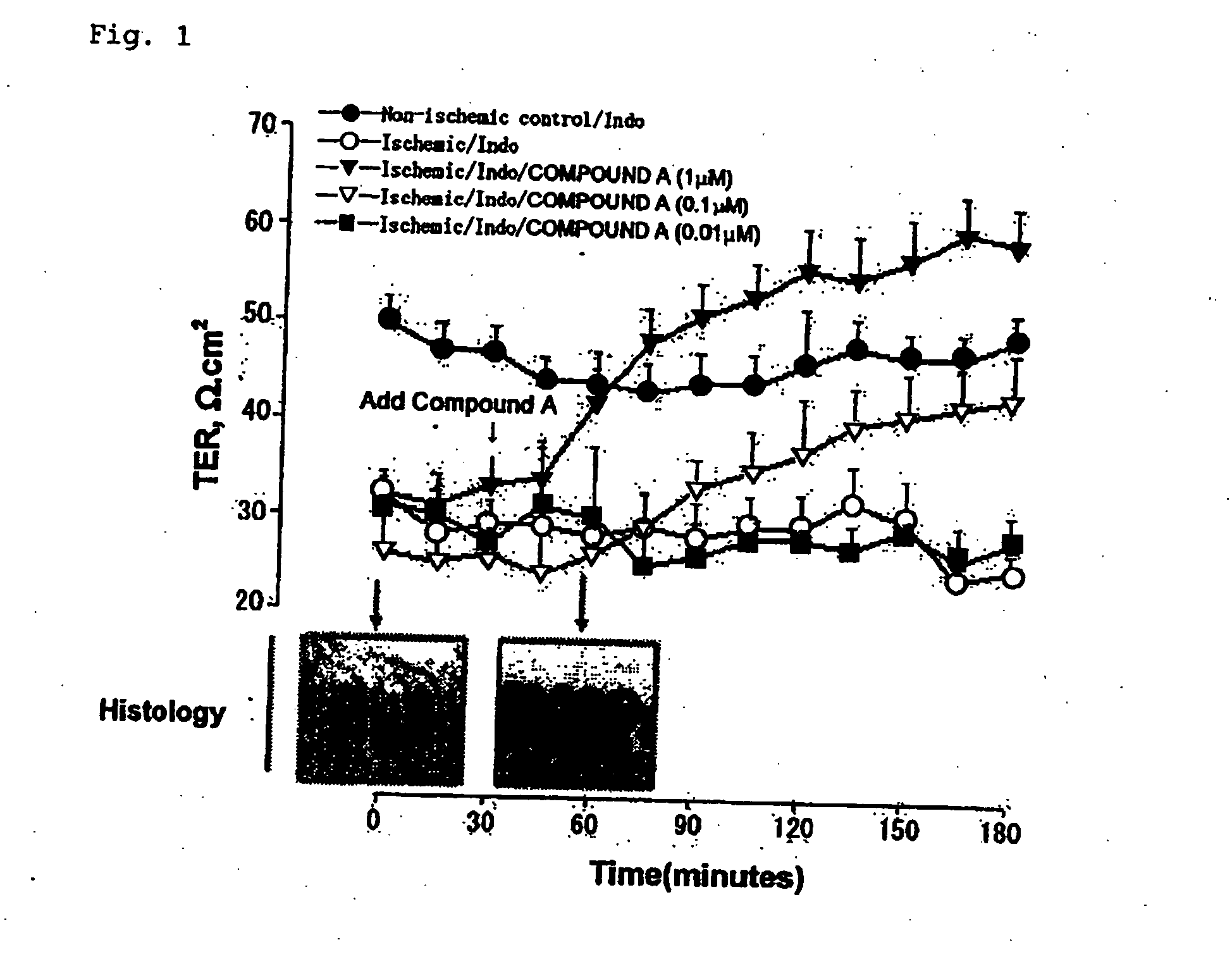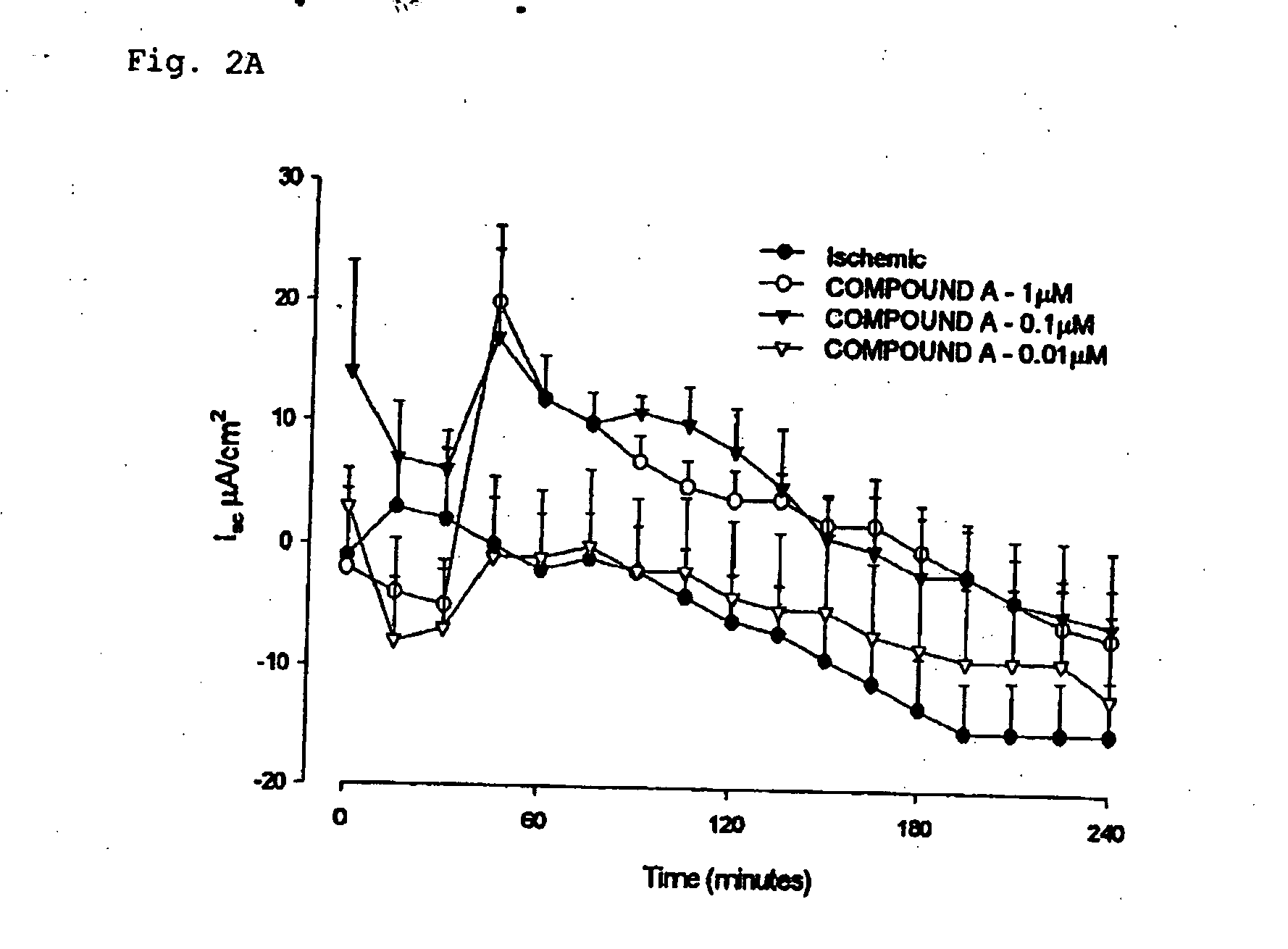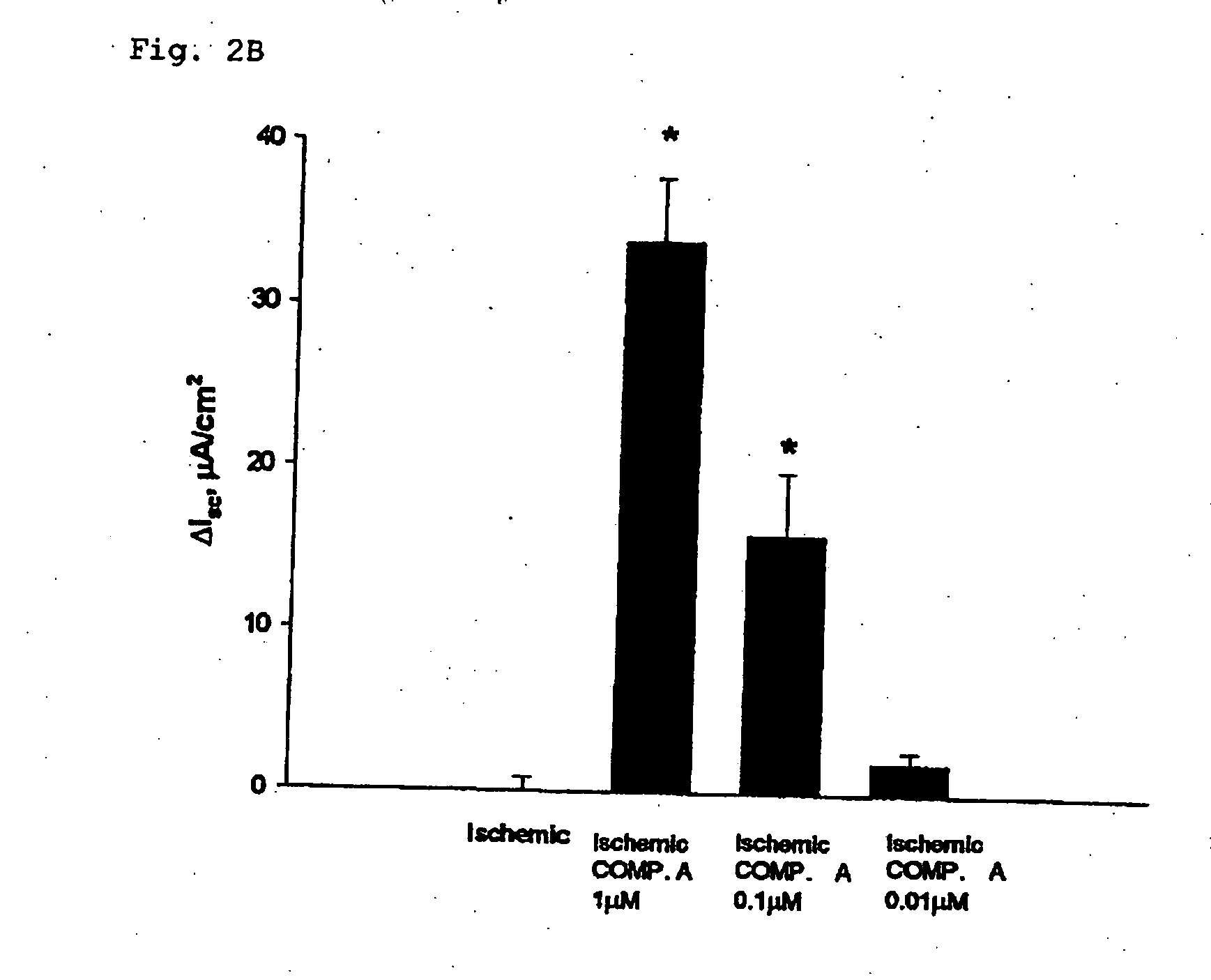Method for treating mucosal disorders
a mucosal disorder and mucosal technology, applied in the field of mucosal disorders, can solve the problems of multiple organ failure, multiple organ failure of many critically ill patients, and becoming increasingly eviden
- Summary
- Abstract
- Description
- Claims
- Application Information
AI Technical Summary
Benefits of technology
Problems solved by technology
Method used
Image
Examples
example 1
(Method)
Experimental Animal Surgeries
[0152] Six to eight-week-old Yorkshire crossbred pigs of either sex were housed individually, and maintained on a commercial pelleted feed. Pigs were held off feed for 24 hours prior to experimental surgery. General anesthesia was induced with xylazine (1.5 mg / kg, IM), ketamine (11 mg / kg, IM), and thiopental (15 mg / kg, IV) and was maintained with intermittent infusion of thiopental (6-8 mg / kg / hr). Pigs were placed on a heating pad and ventilated with 100% O2 via a tracheotomy using a time-cycled ventilator. The jugular vein and carotid artery were cannulated and blood gas analysis was performed to confirm normal pH and partial pressures of CO2 and O2. Lactated Ringers solution was administered intravenously at a maintenance rate of 15 ml / kg / hr. The ileum was approached via ventral midline incision. Ileal segments were delineated by ligating the intestine at 10 cm intervals, and subjected to ischemia by occluding the local mesenteric blood sup...
example 2
[0164] According to the same procedure described in Example 1 except for using colon instead of ileum, recovery of mucosal barrier function in ischemic condition by the COMPOUND A was investigated.
[0165] A) Change in short circuit current response to COMPOUND A in ischemia-injured porcine ascending colon, B) Trans epithelial electrical resistance (TER) in response to COMPOUND A in ischemia-injured porcine ascending colon and C) Serosal to mucosal 3H-mannitol fluxes in response to COMPOUND A in ischemia-injured porcine ascending colon were shown in FIGS. 4 to 6 respectively.
[0166] Application of COMPOUND A to ischemic porcine ascending colon increased Isc(FIG. 4) and TER and recuded serosal-to mucosal fluxes of 3H-mannitol (FIGS. 5 and 6).
CONCLUSIONS
[0167] The data demonstrates that the ClC-2 agonist, COMPOUND A, stimulates Cl− secretion and subsequent recovery of mucosal barrier function in ischemia-injured porcine ileum and colon. Further, the salutary effect of COMPOUND A on m...
example 3
[0168] Female Crl:CD(SD)IGS BR VAF / Plus rats were assigned to 4 study groups (65 / group). Groups 2 through 4 received 20, 100, or 400 μg / kg / day of COMPOUND A, respectively, by oral gavage for 104 weeks. The control group (Group 1) received 10 the vehicle, a 1% aqueous solution of Polysorbate 80. The dose volume was 5 mL / kg / day for all groups. When unscheduled death of animal occurred during the study period, a necropsy was performed on the animal. After 104 weeks of treatment, all surviving animals were sacrificed and necropsied. Each rat was evaluated microscopically for the occurrence of mammary carcinoma.
[0169] As shown in Table 2, COMPOUND A reduced the incidence of mammary carcinoma.
TABLE 2Incidence of mammary carcinomaNumber ofNumber of animalsDoseanimalswith mammaryGroupμg / kg / dayexaminedcarcinoma1. Control06512 (Vehicle)2. COMPOUND A206563. COMPOUND A1006554. COMPOUND A400634
PUM
| Property | Measurement | Unit |
|---|---|---|
| Mass flow rate | aaaaa | aaaaa |
| Mass flow rate | aaaaa | aaaaa |
| Mass flow rate | aaaaa | aaaaa |
Abstract
Description
Claims
Application Information
 Login to View More
Login to View More - R&D
- Intellectual Property
- Life Sciences
- Materials
- Tech Scout
- Unparalleled Data Quality
- Higher Quality Content
- 60% Fewer Hallucinations
Browse by: Latest US Patents, China's latest patents, Technical Efficacy Thesaurus, Application Domain, Technology Topic, Popular Technical Reports.
© 2025 PatSnap. All rights reserved.Legal|Privacy policy|Modern Slavery Act Transparency Statement|Sitemap|About US| Contact US: help@patsnap.com



